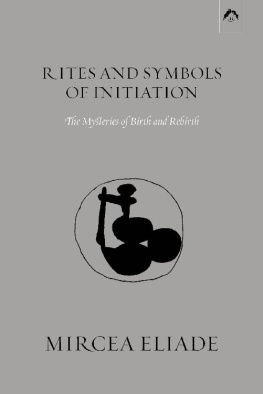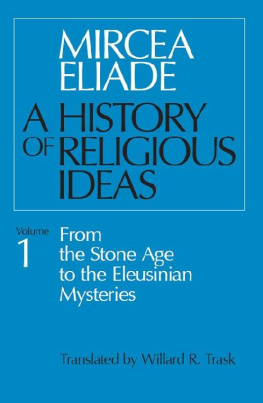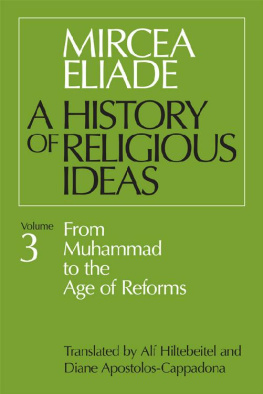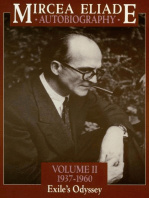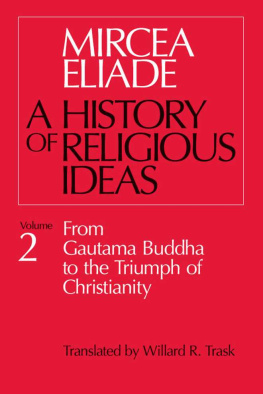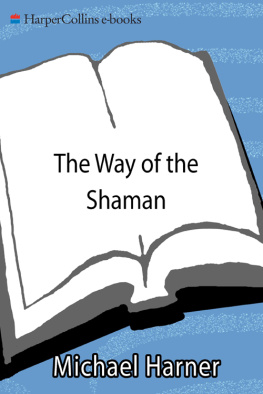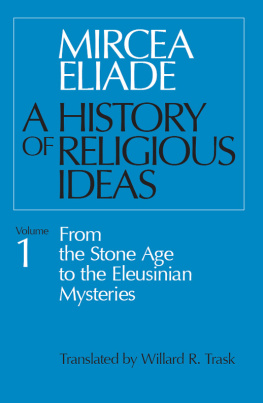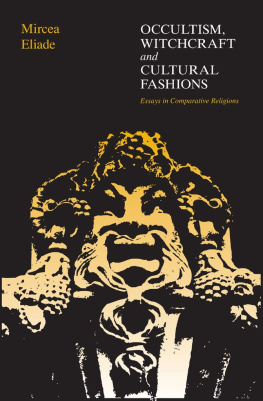Copyright 1984 by Spring Publications, Inc.
Foreword to the new edition copyright Michael Meade
All rights reserved.
eISBN 978-0-88214-598-3 (e-book edition, v. 2.3)
Cover image by Slobodan Trajkovi
MIRCEA ELIADE
RITES AND SYMBOLS
OF INITIATION
The Mysteries of Birth and Rebirth

SPRING PUBLICATIONS
THOMPSON, CONN.
Foreword to the New Edition
Michael Meade
THE close of the twentieth century can be looked at simply, even fundamentally, as the end, or else, it can be seen as a thorough change, a period of radical alteration, a rush of endings and beginnings. The distinctions between the ways we view change and death become more important at the end of eras, at funeral rites and at births. The attitudes of mourners have a crucial effect on a funeral, and the manner of the attendants at a birth can help or harm the new life. Midwives once assisted the newborn into this world and helped the newly dead on to the other world. Willingly or not, we are all attendants at the funeral of the last era and the birth of the next. We are all midwives placing the shroud on a body soon to disappear and anointing the next birth with our prayers, fears, denials, and hopes.
The radical dismantling of institutions, boundaries, beliefs and ecosystems that characterizes the end of an era is an extended funeral that we can consciously attend or try to deny. At some level, we each know that huge shifts in nature and culture are affecting us daily. But without some spiritual vision and ritual structure, we lose the capacity to handle death and embrace life fully. Instead, we build walls of denial to hold off terror and confusion and try to cover our helplessness with displays of force and greed. Denial arises as a primary symptom of the age because of the scope of changes already under way and as a defense against the flood of losses and endings. The cost of mass denial can be found in the increase of random violence, increased abuse of drugs, the collapse of medicine, and the confusion in personal, gender, and national identities. And the momentum of loss increases because a death unmourned becomes a lingering ghost that haunts the living until it receives its allotment of attention and tears. Meanwhile, each birth unprepared and uncared for invites the reckless spirits of chaos to feed on the next generation.
Through his writings, Mircea Eliade fervently worked at keeping the doors of perception open to the world of sacred symbols and creative ritual. Through his insistence that we are each the necessary inheritors of a vast sacred heritage, he has acted as a spiritual elder and distant mentor to me and many students of myth and ritual. Like an archeologist of symbols, he has unearthed, preserved, and found new meanings in the rites of our ancestors. As we sort out which cultural artifacts to carry across the threshold of the millennium, his practice of keeping the local and specific details while seeking cross-cultural meanings will be increasingly valuable.
Rites and Symbols of Initiation was first published in 1958 on the eve of an onslaught of social, sexual, and spiritual changes in American culture. At first titled Birth and Rebirth, it served as an academic text for many years. Now, it finds regeneration as Mircea Eliade intended it, addressed to any nonspecialist reader interested in the spiritual history of humanity. This renewal in print comes at a time of even greater upheaval: the end of the millennium when underlying patterns of initiatory death and rebirth erupt through the surface of cultures and disrupt cycles of nature. There may be no time more suited to the study of rites of passage than the threshold between the end of modernity and the uncertain future of humanity. As an old proverb reminds us: We can only see as far forward as we remember back. The future is contained in the past; and the past is carried within us like seeds of memory waiting for the waters of attention.
When looking behind before moving ahead, our usual mistake lies in not looking back far enough. In his labors on behalf of the sacred world, Eliade does not make that mistake. He reaches all the way back and down to the roots of the mysteries of birth and death, seeking the parts they play in times of change and renewal. The rebirth of this book in print is also a regeneration of the spirit of Eliades work on ritual, transformation, and shamanism. This volume seems to function as an offshoot, a renewable branch that sprouts from the great body of his work. It also serves as a divining rod to find the roots of the tree of the knowledge of life and death.
This book is a meditation on initiation and rites that open pathways between the withering daily world and the sacred other world, where root images can restore the flow of life again. From it arises a pageant, a bold procession of images and ideas in which the faces of birth, death, and resurrection appear in sundry masks and guises. Symbols and rites from many places and various stages of cultural ascendancy and decline appear. Some are finely shaped and glisten with intelligent meaning, while others are partly broken, poorly fashioned, twisted with loss. The study of initiation rites becomes a tracing of the lines of spiritual history. When rites of passage disappear in the storm of modern, material cultures, Eliade tracks the survival of the rites and symbols in the realms of dream, alchemy, literature, and psychotherapy.
Eliade establishes initiation as a universal rite, an archetypal form that surfaces and influences life wherever events have the spirit of beginning or the weight of an end. As if initiation and its patterns were indissolubly linked with the very structure of spiritual life an indispensable process in every attempt at regeneration. As an elemental pattern or archetypal style, initiation is a whole way of seeing into the world, one that sees death as pan of the fabric of life. On the ground of initiation, death is the opposite of birth, not the opposite of life. Life includes both, and the spirit of life regenerates in the land of death. Archaic rites of initiation show the basic pattern for genuine change. For any transformation to be meaningful it must be thorough, and to be thorough requires both the ache of loss and a spirit of restoration.
Eliade writes that it is only in initiation that death is given a positive value. More than an empty tomb, death becomes also the womb of change. In dreams and dramas of initiation, death represents change for the entire psyche and life of a person. It means change inside and out, not a simple adaptation or switch in lifestyle. Initiation includes death and rebirth, a radical altering of a persons mode of being; a shattering and shaking all the way to the ground of the soul. The initiate becomes as another person: more fully in life emotionally and more spiritually aware. Loss of identity and even feeling betrayal of ones self are essential to rites of passage. In that sense, every initiation causes a funeral and a birth; a mourning appropriate to death and a joyous celebration for the restoration of full life. Without conscious rituals of loss and renewal, individuals and societies lose the capacity to experience the sorrows and joy that are essential for feeling fully human. Without them life flattens out, and meaning drains from both living and dying. Soon there is a death of meaning and an increase in meaningless deaths.
Traditional rites of passage were based in the hard knowledge that the sanctity of life and the making of a meaningful death must be struggled for by each person and that the entire drama must be recast for each generation. Participating in ordeals of finding meaning was both an inheritance and a requirement that made each child a central figure in his or her own dream and in the life of the tribe. In contrast to our practice of criticizing young people for unnecessarily drawing attention to themselves, an awareness of initiation draws everyone to the young people to see the future breaking out of them. Youth naturally feel drawn to thresholds of the unconscious and the unfinished; they are both knowing and unknowing. If our first birth is a fall into life, this second birth falls toward death and the underworld. It requires a return to the roots of knowledge, the roots of consciousness and the seeds of meaning hidden in each person. Only by a descent and a series of adventures along the dark roads of the unconscious can the inner life fully awaken. Rites of initiation intended to make the inevitable descent a direct opening of the spirit and soul in the life of each youth. Through that opening the woman comes out of the girl, and the man separates from the boy. The story of childhood ends and the next drama begins.
Next page
